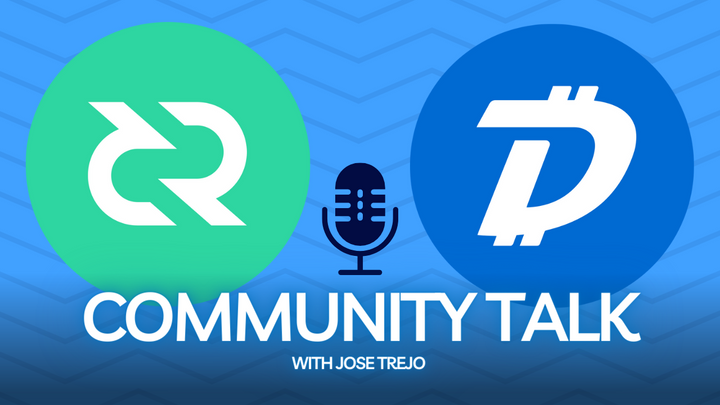Cypherpunks aimed to revolutionize digital transactions by pushing for the creation of digital cash and anonymous transaction systems.
Introduction
As we continue unravelling the origins of the Cypherpunk movement, our exploration shifts to the technological aspirations that powered this subculture.
If you missed the first article in this series CLICK HERE.
In this second instalment we journey through the pioneering technologies advocated by Cypherpunks. This brings us on to the advent of creative tools, notably Pretty Good Privacy (PGP) developed by Phil Zimmermann. Cypherpunks were architects of change, envisioning a future where digital privacy was a fundamental right.
This article aims to cover their pursuit of cryptographic innovations, focusing on the emergence of digital cash and anonymous transactions as key components of their technological vision.
Technological Aspirations of Cypherpunks
Zimmermann played a crucial role by creating PGP. This became a key tool for encrypted communication, allowing people to keep their messages private. This technology symbolized the Cypherpunk goal of giving individuals control over their privacy.
PGP operates as a cryptographic software program designed to secure electronic communications. It employs a combination of symmetric-key cryptography and public-key cryptography. When a user sends a message, the software generates a random symmetric key for that specific message. This symmetric key is then used to encrypt the message's content. Simultaneously, PGP uses the recipient's public key to encrypt the randomly generated symmetric key. The encrypted message and the encrypted symmetric key are then sent to the recipient. Upon receiving the message, the recipient uses their private key to decrypt the symmetric key, allowing them to decrypt the actual message. This ensures the confidentiality and integrity of electronic communications, allowing individuals to exchange information securely. The significance of PGP in the Cypherpunk movement lies in the movement's ideals, emphasizing the empowerment of individuals through cryptographic tools.
The link below from Wikipedia provides further reading about PGP:

It was on this day in 1991 that I sent the first release of PGP to a couple of my friends for uploading to the Internet. First, I sent it to Allan Hoeltje, who posted it to Peacenet, an ISP that specialized in grassroots political organizations, mainly in the peace movement.
Cypherpunks aimed to revolutionize digital transactions by pushing for the creation of digital cash and anonymous transaction systems. They envisioned a form of currency that would allow people to make transactions without revealing their identities, prioritizing privacy. This involved developing cryptographic protocols and decentralized systems to ensure secure and private online transactions. By leveraging their expertise in cryptography and computer science they aimed to establish a financial system independent of centralized authorities, emphasizing individual freedoms and privacy. These discussions led to the development of cryptocurrencies and blockchain technologies.
Cypherpunks in the Crypto Wars
The Cypherpunks actively engaging in battles over encryption during a period of government opposition and attempts to regulate cryptography. Faced with challenges from authorities seeking to control the use of strong encryption they staunchly defended the importance of privacy and civil liberties. As encryption technologies gained traction, governments expressed concerns about national security and law enforcement. In response, authorities aimed to control and limit the use of strong encryption, fearing it could impede surveillance efforts.
The First Crypto War unfolded in the early 90s, marked by a clash of interests between various factions with differing views on the use of encryption. On one side stood the US Government, spearheaded by the Clinton Administration and intelligence agencies like the National Security Agency (NSA). They sought greater control over encryption technology, expressing concerns that unregulated encryption might facilitate criminal and terrorist activities, posing a threat to national security. Privacy advocates, including organizations like the Electronic Frontier Foundation (EFF) and the American Civil Liberties Union (ACLU), opposed the government's attempts, viewing them as encroachments on personal freedoms and privacy. Simultaneously, cryptography researchers, enthusiasts, and the loosely affiliated group known as Cypherpunks, led by figures like Phil Zimmermann, played a pivotal role in advocating for the use of encryption.
The Second Crypto War emerged from pivotal events that reignited a global discourse on encryption, privacy, and security. Edward Snowden's revelations in 2013, exposing extensive mass surveillance by the US government, sparked widespread debates on privacy rights and encryption. Simultaneously, the adoption of end-to-end encryption in communication platforms, exemplified by WhatsApp (2014), Signal (2013), and Apple's iMessage (2011), became central to the discussion. Unlike its predecessor in the 90s, which focused on the distribution and exportation of specific encryption technologies, the Second Crypto War addressed the broader integration of encryption. This conflict had a more global reach, involving governments, tech companies, and privacy advocates on an international scale.
The links below provide a more detailed exploration of the Crypto Wars:

Overall, the creation of DES was an important milestone in the history of cryptography because it spawned the development of encryption algorithms outside of military use.

A long time ago in the early days of the internet, a battle over encryption for privacy and freedom online was fought — in what became known as the First Crypto War.

Explore the history, key players and implications of the Second Crypto War in balancing privacy and government surveillance — and how it impacts the cryptocurrency space.
Evolution of Cypherpunk Ideals
Digital privacy relies significantly on digital security, with cryptography being a key element. Cryptography not only secures everyday transactions but also underpins technologies like blockchains, whistleblowing platforms, and anonymity networks, aiming to challenge government control.
Despite law enforcement's resistance, Cypherpunk ideology persists, influencing a new generation of digital privacy activists challenging contemporary government policies. Understanding this community's successful resistance against state regulation provides valuable context for ongoing debates on digital privacy.
The development of anonymous networks like Tor and digital currencies like Bitcoin were nurtured by Cypherpunk ideals. These technologies aimed to provide users with increased privacy and security online.
The link below provides a great insight into the ideology:
Cypherpunk ideology: objectives, profiles, and influences (1992–1998):https://www.tandfonline.com/doi/full/10.1080/24701475.2021.1935547
Legacy of Early Cypherpunks
The legacy of early Cypherpunks has had a lasting impact on modern cryptography, privacy technologies, and the blockchain space. Their influence extended to technologies such as blockchains, enabling private and secure financial transactions beyond government monitoring. Whistleblowing platforms, designed to protect the identity of those exposing information, and anonymity networks further reflected the Cypherpunk ideals of challenging centralized control. Their principles influenced the development of open-source software and decentralized systems. Advancements in cryptography contributed to the creation of cryptocurrencies and other privacy innovations.
Conclusion
In essence, Cypherpunks, with their technological vision and innovations like Pretty Good Privacy (PGP) shaped the digital privacy we have today and strive to have in the future. Engaging in the Crypto Wars, Cypherpunks defended privacy rights against government opposition, solidifying their commitment to cryptographic tools. Despite some suggesting a decline in influence by the year 2000, the Cypherpunk ideology endures, inspiring a new generation of digital privacy activists.









Comments ()